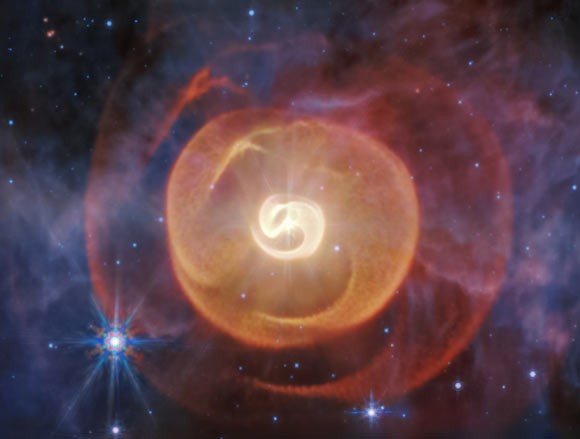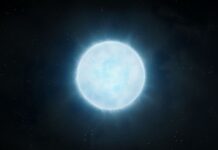Astronomers using the James Webb Space Telescope (JWST) and data from the European Southern Observatory’s Very Large Telescope (VLT) have uncovered a complex system of dust shells surrounding a unique binary star system called Apep. This system contains two exceptionally rare Wolf-Rayet stars, and the findings provide unprecedented insight into how these massive stars evolve and interact.
What Are Wolf-Rayet Stars?
Wolf-Rayet stars are a small and fascinating class of stars, with only an estimated one thousand in the entire Milky Way. These are massive binary stars nearing the end of their lives, forging some of the earliest carbon in the Universe. Their extreme heat and powerful stellar winds shed material rapidly, forming spectacular dust structures.
The Apep System: A Unique Discovery
Apep stands out because it is the only known system in our galaxy containing two Wolf-Rayet stars of this type orbiting each other. Researchers led by Ryan White of Macquarie University and Yinuo Han of Caltech used JWST’s mid-infrared imaging capabilities, combined with eight years of VLT data, to refine the stars’ orbital path and uncover hidden dust structures. The discovery is important because it clarifies how these stars evolve and interact.
Four Spirals of Dust Revealed
Before JWST, ground-based telescopes detected only one shell of dust around Apep. The new observations revealed not one, but four serpentine spirals of dust, each expanding outwards in a precise pattern. The telescope’s enhanced clarity allowed scientists to confirm that the stars orbit each other every 190 years, closely passing for about 25 years during each orbit. This periodic proximity is when most of the dust is formed.
A Third Star Influences the Dust
The JWST observations also confirmed the presence of a third star in the system — a massive supergiant. This third star gravitationally interacts with the dust ejected by the Wolf-Rayet pair, carving holes into each expanding cloud. The existence of this third star was previously suspected, but the JWST data provided definitive proof.
Key Findings and Future Research
The team’s findings, published in the Astrophysical Journal, demonstrate the power of JWST in revealing previously hidden details in astronomical systems. Dr. Han described the effect as “like walking into a dark room and switching on the light.” The remaining mystery concerns the precise distance to the Apep system from Earth, which will require further observations.
“Webb gave us the ‘smoking gun’ to prove the third star is gravitationally bound to this system,” Dr. Han said.
This discovery has reshaped our understanding of how Wolf-Rayet stars operate, providing a template for future observations of similar systems.







































































